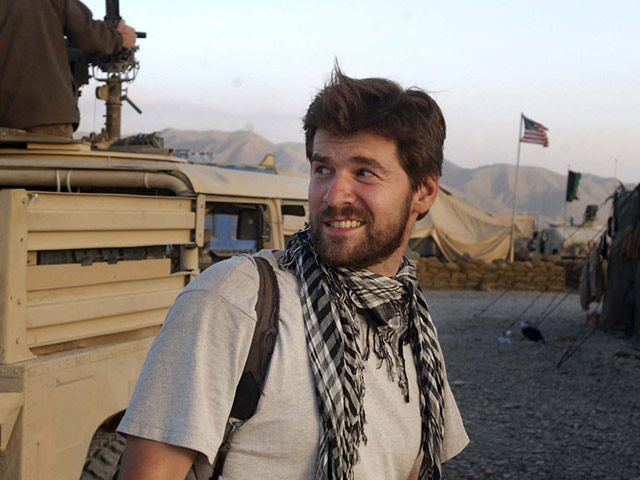Lang student remembers her mentor, Chris Hondros
I never thought Chris Hondros would die so soon. Neither, I’m sure, did anyone among the thousand people who filled the Sacred Heart’s St. Stephens Church in Carroll Gardens, Brooklyn, on April 27. At Chris’s memorial, we were reminded of the shock of a week earlier, when word came that Chris, a veteran Getty Images photojournalist, alongside the photographer and filmmaker Tim Hetherington, was killed in Misurata, Libya. Both were victims, it is believed, of a rocket propelled grenade. Tim was killed instantly, while Chris suffered grave head wounds.

All who knew Chris waited to hear that he was going to survive. He was revived twice before he died, according to those who were beside him.
Chris wasn’t just a photojournalist. He was also a humanitarian. He did not belong to any NGO, but he helped others in his own way. He reached out to his subjects; he didn’t just photograph them and walk away. Chris started fundraisers, pairing his images with Bach, and donating the money — whether to the victims of the Haitian earthquake or the Iraq war.
I met Chris on a February evening in 2009, when he came to The New School to participate in a Free Press panel on reporting the Iraq war. He was polite, charming and articulate. He discussed his series of photos from Tal Afar, when he captured the horror that ensued after a car failed to stop at a checkpoint. Inside was a family of eight. When U.S. soldiers opened fire, six children were orphaned. The soldiers believed they had given ample warning, and fired thinking the car was a threat.
Chris’s images from Tal Afar became symbolic of his message to the world of “what war really is.” That February night, as he spoke at The New School, Chris’s words revealed his passion, quiet but unshakable.
We became friends. Chris was a mentor. We met often to discuss his work and mine. He would give advice on my photography, telling me where I could get closer, whose face should be in the frame, where the light should come from. He invited me to parties; he introduced me to friends. He loved sharing his philosophies and knowledge of the world.
Chris loved education. Two months after the Iraq panel, he sent me an email asking if he could come in to the Free Press class and talk about photography in a more personal environment. Within weeks, he was in the class.
Most recently, Chris had emailed his friend Andrew Meier, a journalist who teaches at Lang and advises the Free Press, saying that he’d like to come in and teach a class on Afghanistan — a war he had covered extensively. By all means, Meier replied, but warned that the university couldn’t pay him. No, Chris wrote back, he’d only meant a seminar or a “couple of classes,” and of course he’d do it for free.
Chris would have been a remarkable professor. He often devoted his spare time to helping young journalists, suggesting books and advising them on how to get into the field. And he was not afraid to talk about his experiences in detail. But the best way to learn was to journey alongside him, something I was lucky enough to do in New York.
In the week between his death and memorial, it was as if the journalism world stood still. Knowing Chris made me want to be a better photojournalist. He taught me how to care about my subjects. The job, he taught me, is to report on what you see, and instead of waiting for help, reach out to those in need.
Chris was not in pain when he died, but he left many in pain. Those who knew him will remember him for his intellect, creativity and bravery. We will also remember his quirky side: how he asked for fashion tips, his love of classical music, his “Hondros rules”, and his tweed and corduroy blazers. We will remember the man who tried to lift people out of their saddest times, with a sideways smile and a hand on their shoulder, saying, “Hondros Rule Number 14: ‘Take a deep breath. Take it one step at a time. Everything is going to be okay.’”







Leave a Reply